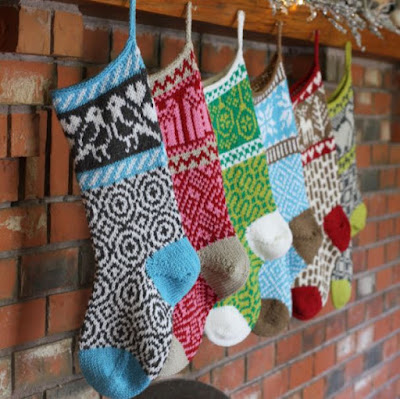Fabrics may be considered to be matte, have sheen or be shiny. Fashion stylists will tell you that shine draws the eye of the viewer and will therefore make an area look larger or at least bring the viewer's attention. Matte fabrics will recede and may make you look a little slimmer. These effects are very subtle. Many of us draw attention to our faces with the sheen of jewellery or silk scarves.
I've collected some detail shots of some of my patterns for you, unfortunately the detail doesn't show as well as I would like. The top row is from left; mohair, bamboo and rayon/sea silk. The bottom row is mixed fibre rayon/wool/mohair, super wash wool and mohair/silk with a metallic thread. You might find it helpful to look through your own clothing comparing wool, cotton, silk and rayon to increase your understanding.
Here's a few fabric photos I pulled off of Pinterest to help demonstrate.
Sheen, shine and matte.
We see mainly matte yarns and yarns with a little sheen in the knitting world. I did knit a very shiny sweater from lurex yarn many years ago like this one:
 |
| http://www.ravelry.com/yarns/library/colourmart-lurex-sparkle-yarn |
One other think to keep in mind is Imogene of Inside Outside Style recommends matching our natural sheen with at least one item of the things we wear to create harmony.


























































